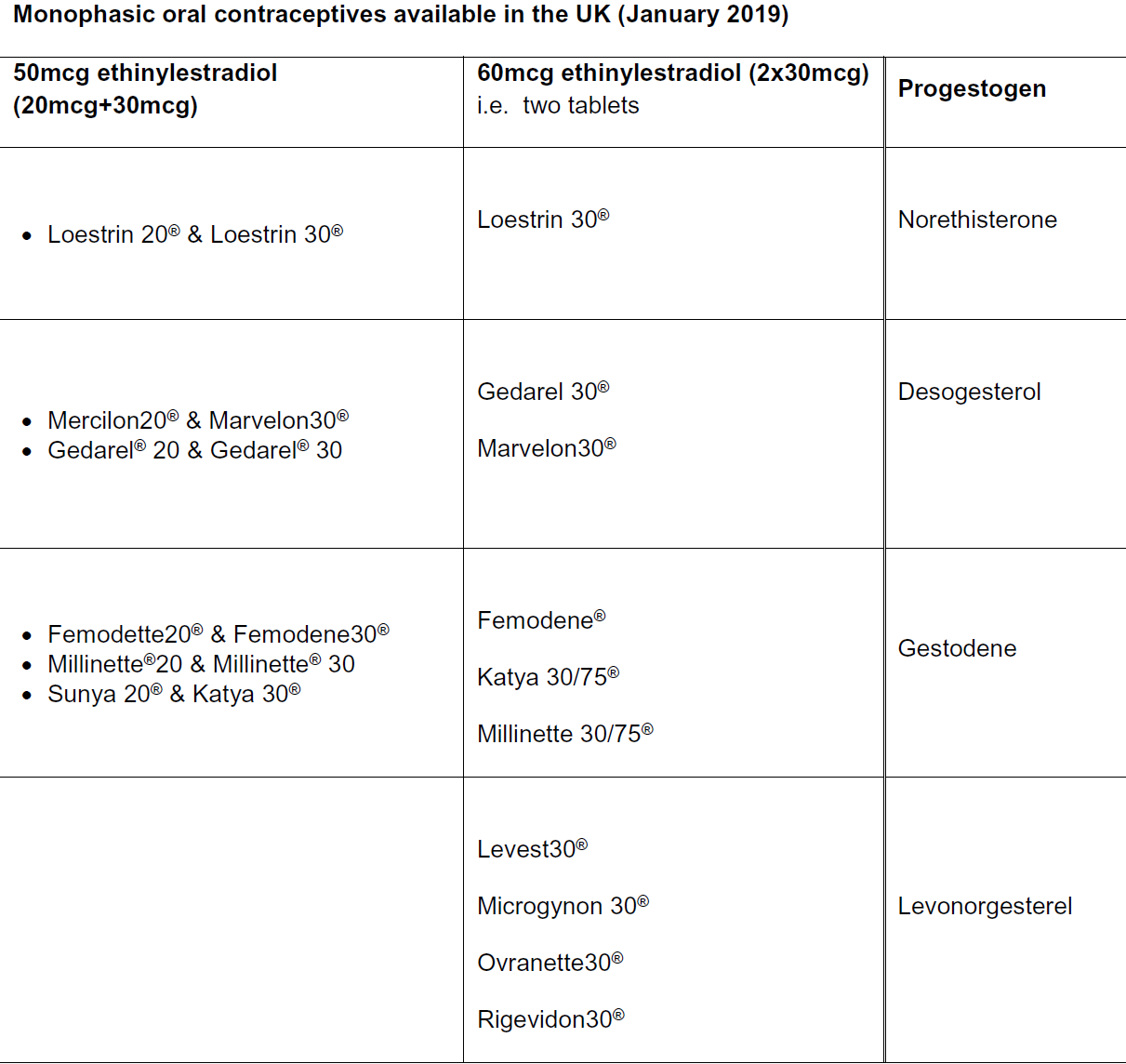choice of 50 mcg combined oral contraceptive (COC) if on a hepatic enducer drug
Last edited 05/2019
Choice of Combined Oral Contraceptive (COC) if taking a Hepatic Enzyme Inducing drug
- if a woman is taking a hepatic enzyme-inducing antiepileptic drug (AED)
short-term (<2 months)
- can be managed more flexibly with the use of a minimum of 30 micrograms
ethinylestradiol (EE) pill continuously or tricycle with a shortened 3
or 4 day pill-free interval (PFI), for the duration of treatment and for
a further 28 days (1,2)
- additional contraceptive precautions (such as condoms) are also recommended for this method and during this period
- ideally it is recommended to change to an alternative method of
contraception that is not affected by enzyme-inducing drugs; such
as a one-off depot medroxyprogesterone acetate (DMPA) injection which
should cover both the duration of treatment and a further 28 days
- can be managed more flexibly with the use of a minimum of 30 micrograms
ethinylestradiol (EE) pill continuously or tricycle with a shortened 3
or 4 day pill-free interval (PFI), for the duration of treatment and for
a further 28 days (1,2)
- for longer term use (>2 months) of enzyme-inducing AEDs
- the Faculty of Sexual and Reproductive Healthcare (FSRH) suggest that
an alternative contraceptive method, such as DMPA, levonorgestrel-releasing
intrauterine system (LNG-IUS) or intrauterine devices (IUD), which are
not affected by enzyme-inducing AEDs, should be used first line instead
of a COC
- if however a woman chooses to use a COC, a daily dose of at least 50
micrograms of oestrogen (usually ethinylestradiol (EE)) should be used
(to a maximum of 70 micrograms). This is taken continuously or as a tricycing
regimen with a PFI of 4 days for the duration of treatment and a further
28 days
- there are no suitable EE 50 microgram preparations available in
the UK
- Norinyl-1 contains 50 micrograms of the EE prodrug mestranol
- metabolic conversion of mestranol to EE is only about 75%-80%
- 37.5-40 micrograms of oestrogen is produced, which is
less than the 50 microgram recommended minimum
- 37.5-40 micrograms of oestrogen is produced, which is
less than the 50 microgram recommended minimum
- metabolic conversion of mestranol to EE is only about 75%-80%
- Norinyl-1 contains 50 micrograms of the EE prodrug mestranol
- although unlicensed, a combination of lower dose pills that contain the same progestogen could be used to obtain the required minimum of 50 micrograms of oestrogen, i.e. a 30 microgram COC plus a 20 microgram COC, or two 30 microgram COCs
- additional hormones taken are metabolised to a greater extent by
the liver because of enzyme induction, leaving the same amount in
the body as other COC takers would receive from a single COC. (6)
The combinations of monophasic COCs listed in table below will provide
a daily dose of >=50 micrograms of EE
- note that use of a COC in both these ways is unlicensed, and it is important to ensure that the patient is made aware of this. The manufacturer of the chosen contraceptives will not accept liability if a problem should occur
- rifampicin and rifabutin are more potent enzyme inducers than
AEDs and women using these drugs long term (over 2 months) require
an alternative method of contraception, i.e. avoiding the COC altogether,
even the higher-dose tricycling regimens as explained below (2)
- there are no suitable EE 50 microgram preparations available in
the UK
- the Faculty of Sexual and Reproductive Healthcare (FSRH) suggest that
an alternative contraceptive method, such as DMPA, levonorgestrel-releasing
intrauterine system (LNG-IUS) or intrauterine devices (IUD), which are
not affected by enzyme-inducing AEDs, should be used first line instead
of a COC

- enzyme inducers and the combined pill
- enzyme activity does not return to normal for several weeks after stopping
an enzyme-inducing drug - therefore appropriate contraceptive measures
are required for 4 weeks for the liver enzymes to return to normal functionality
- therefore higher doses of the COC, with or without additional contraceptive protection, should be continued for 4 weeks after stopping the AED (4) this period should be increased to 8 weeks after more prolonged used of enzyme inducers. In all cases, the PFI should be omitted when switching back to a standard or low-dose COC
- enzyme activity does not return to normal for several weeks after stopping
an enzyme-inducing drug - therefore appropriate contraceptive measures
are required for 4 weeks for the liver enzymes to return to normal functionality
Reference:
- Faculty of Sexual & Reproductive Healthcare Clinical Guidance.Clinical Guidance: Drug Interactions with Hormonal Contraception January 2018.
- NHS Specialist Pharmacy Service (May 2019). Which combined oral contraceptive pill is suitable in a patient who is taking hepatic enzyme-inducing drugs, such as carbamazepine, phenytoin, rifampicin or rifabutin?
hepatic enzyme inducers and different contraception (contraceptive) methods